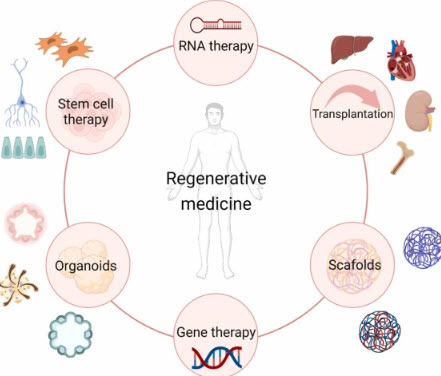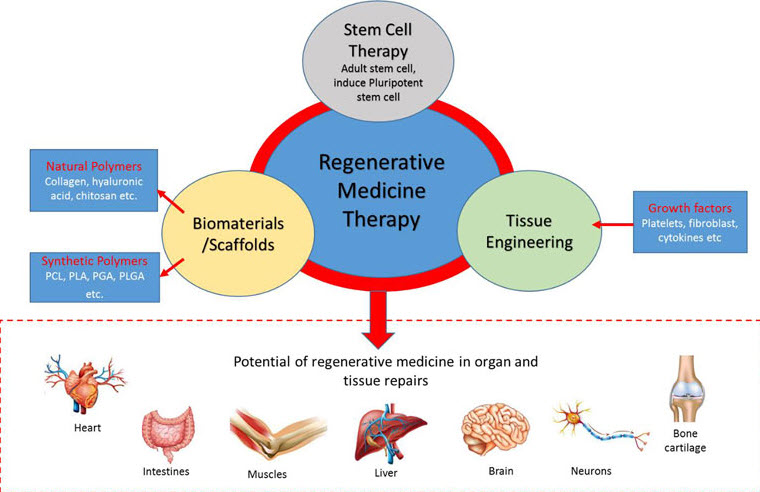Regenerative Medicine
Regenerative medicine emerges as a beacon of hope for those suffering from persistent back and joint pain, revolutionizing traditional pain management strategies.
By harnessing the body’s innate healing powers, it offers a promising pathway to restore function without relying solely on medications or invasive procedures.
Individuals seeking holistic healing will find that integrative physical medicine and functional medicine can provide comprehensive, patient-centered solutions.
Keep reading to explore the transformative potential of regenerative medicine in addressing chronic pain.
Back Pain

Individuals enduring the throes of back pain often seek refuge in the evolving field of regenerative medicine. This promising domain stands at the confluence of pain management, integrative physical medicine, and functional medicine. It aims not merely to alleviate discomfort but to encourage the body’s innate healing mechanisms to repair and renew the affected tissues.
At the heart of regenerative medicine lies a commitment to understanding the root causes of pain. Practitioners combine advanced diagnostics with a patient-centered approach to detect underlying dysfunctions. This precise attention fosters targeted treatments, tailored to foster each individual’s journey toward recovery.
Among the strategies employed, stem cell therapy and platelet-rich plasma (PRP) injections are notable examples. These interventions exemplify the commitment to harnessing biological processes for healing. When expertly administered, they can influence the course of degenerative conditions, potentially restoring function and quality of life in many cases.
The symbiosis of regenerative medicine with traditional treatments marks a transformative era in healthcare. Patients are not simply given temporary solutions to their distress; they are offered a chance for restoration and rejuvenation, pivotal to achieving sustainable well-being.
Joint Pain

Joint pain afflicts countless individuals, impeding their mobility and diminishing their quality of life. Regenerative medicine emerges as a beacon of hope, offering innovative approaches to tackle this pervasive issue. It intertwines the principles of pain management and functional medicine to restore joint function organically. Many Americans over the last 10 years have attempted to use opioids for joint pain which has lead to addiction for many.
The application of regenerative techniques such as autologous stem cell therapy has revolutionized the treatment of joint pain. By focusing on the body’s regenerative capabilities, these methods address inflammation and tissue damage at their source. Patients experiencing chronic conditions, such as osteoarthritis, find a renewed sense of optimism through these treatments.
Medical clinics in the space of integrative physical medicine emphasize the holistic recovery of joint health. Embracing a multidimensional strategy, they blend regenerative techniques with physical rehabilitation to enhance the healing process. This synergistic approach not only targets pain relief but also works to improve range of motion and joint strength.
Within the scope of joint pain management, regenerative medicine continues to make significant strides. By prioritizing patient-centered care and innovative treatment methodologies, it represents a paradigm shift in the ongoing battle against joint degeneration and chronic pain.
Holistic Healing
Embracing the precepts of holistic healing, regenerative medicine seeks to mend the intricate tapestry of human health. It aligns with the principles of functional medicine to treat a patient’s physical condition, emotional well-being, and spiritual health as integral components of overall vitality.
Healthcare practitioners advocate for personalized medicine that acknowledges each patient’s unique physiological makeup and lifestyle factors. This attentiveness enhances the efficacy of regenerative treatments, ensuring a person’s journey to wellness is as individualized as their DNA.
Within the sphere of holistic healing, regenerative medicine finds its strength in its ability to stimulate the body’s inherent repair mechanisms. Such a strategy elevates the practice beyond mere symptom treatment to become a catalyst for the body’s natural restoration properties.
The integration of regenerative and holistic techniques exemplifies a commitment to comprehensive care. Medical professionals draw from a diverse repertoire of therapies designed to activate, nourish, and support the body’s self-healing capacities, ushering in a new era of sustained health transformation.
Frequently Asked Questions
What are the common causes of back pain and how can regenerative medicine help in relieving it?
Back pain often stems from a diversity of origins, ranging from incorrect posture, muscle strain, and traumatic injuries, to chronic conditions such as arthritis or degenerative disc disease. Regenerative medicine, an innovative branch of medical practice, provides hope by exploiting the body’s natural healing processes to restore affected tissues, potentially alleviating the discomfort and improving function in individuals suffering from back pain.
How does regenerative medicine address joint pain and promote long-lasting relief?
Regenerative medicine offers a groundbreaking approach to joint pain by addressing the root causes of discomfort and promoting the body’s own healing mechanisms. This innovative field harnesses natural processes to encourage tissue regeneration, facilitating long-term relief that transcends traditional symptomatic treatments.
Can regenerative medicine provide a holistic approach to healing that addresses the root cause of pain?
Regenerative medicine, with its focus on repairing tissues and improving function, offers a promising avenue for holistic healing by targeting the underlying issues causing pain. Embracing an approach that can include integrative physical medicine and functional medicine, this innovative field seeks to go beyond symptom management, striving to restore the body’s innate ability to heal itself.
What are the different regenerative medicine treatments available for back pain?
Regenerative medicine treatments for back pain range from stem cell therapy and platelet-rich plasma (PRP) injections to prolotherapy and intervertebral disc regeneration, all designed to harness the body’s own healing mechanisms. Each approach presents a unique pathway to restoring function and alleviating discomfort, marking a significant shift from traditional pain management strategies.
How does regenerative medicine differ from traditional pain management approaches?
Regenerative medicine represents a shift from traditional pain management by focusing on repairing tissues and promoting healing rather than solely alleviating symptoms. This innovative approach harnesses the body’s natural healing processes, seeking to restore function and alleviate pain through cellular and biomolecular means.
Conclusion
Regenerative medicine stands as a pivotal advancement in addressing chronic back and joint pain, offering a foundational shift away from temporary relief towards long-term healing.
By focusing on the body’s own regenerative capabilities, treatments such as stem cell therapy and PRP injections target the underlying causes of pain and tissue degeneration.
This field melds with holistic and functional medicine principles, emphasizing a personalized approach to healthcare that considers the patient’s overall well-being.
Regenerative medicine not only symbolizes a transformative era in healthcare, but it also empowers patients with sustainable ways to revive their body’s innate ability to heal, promising a future of improved quality of life and mobility.


